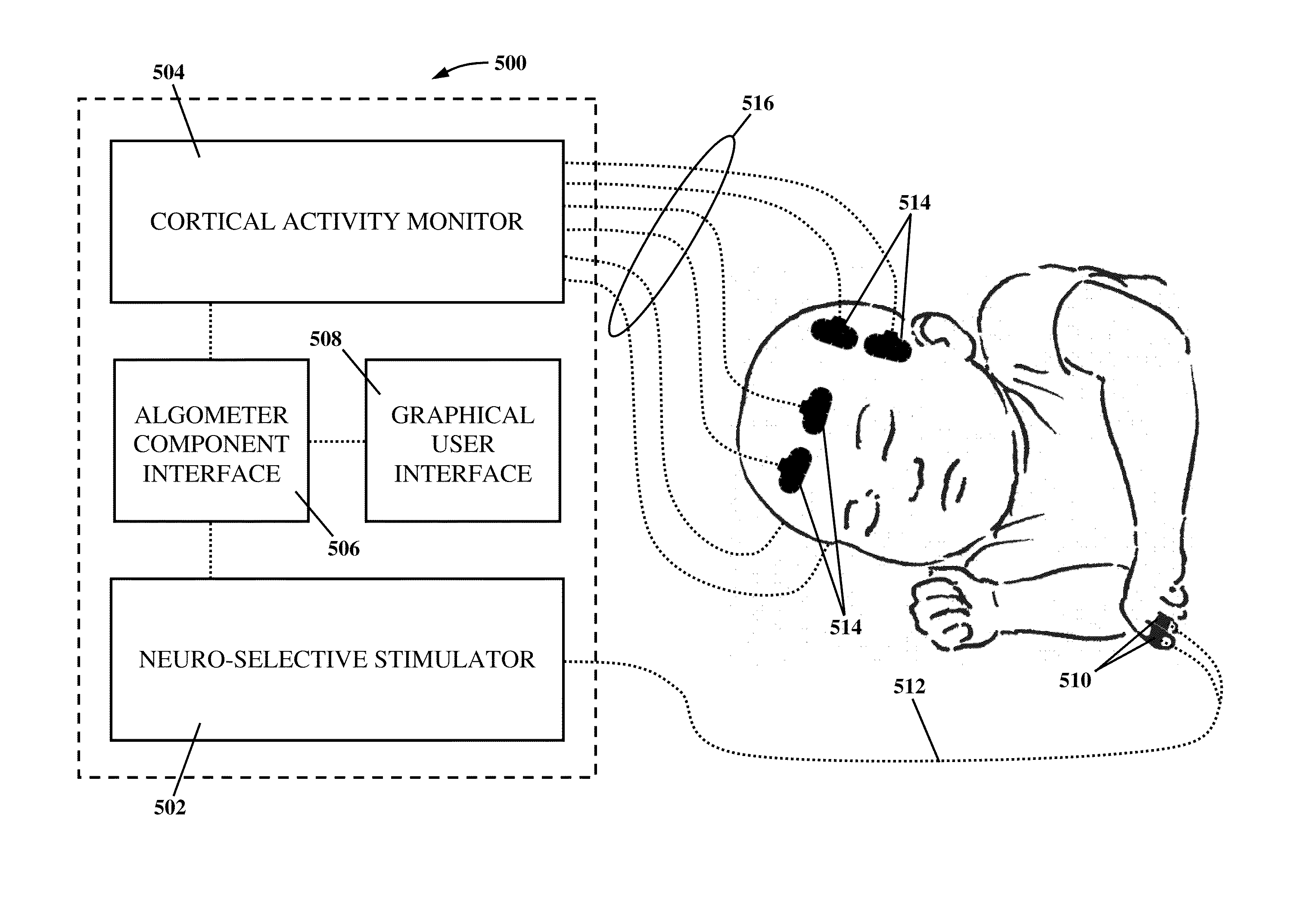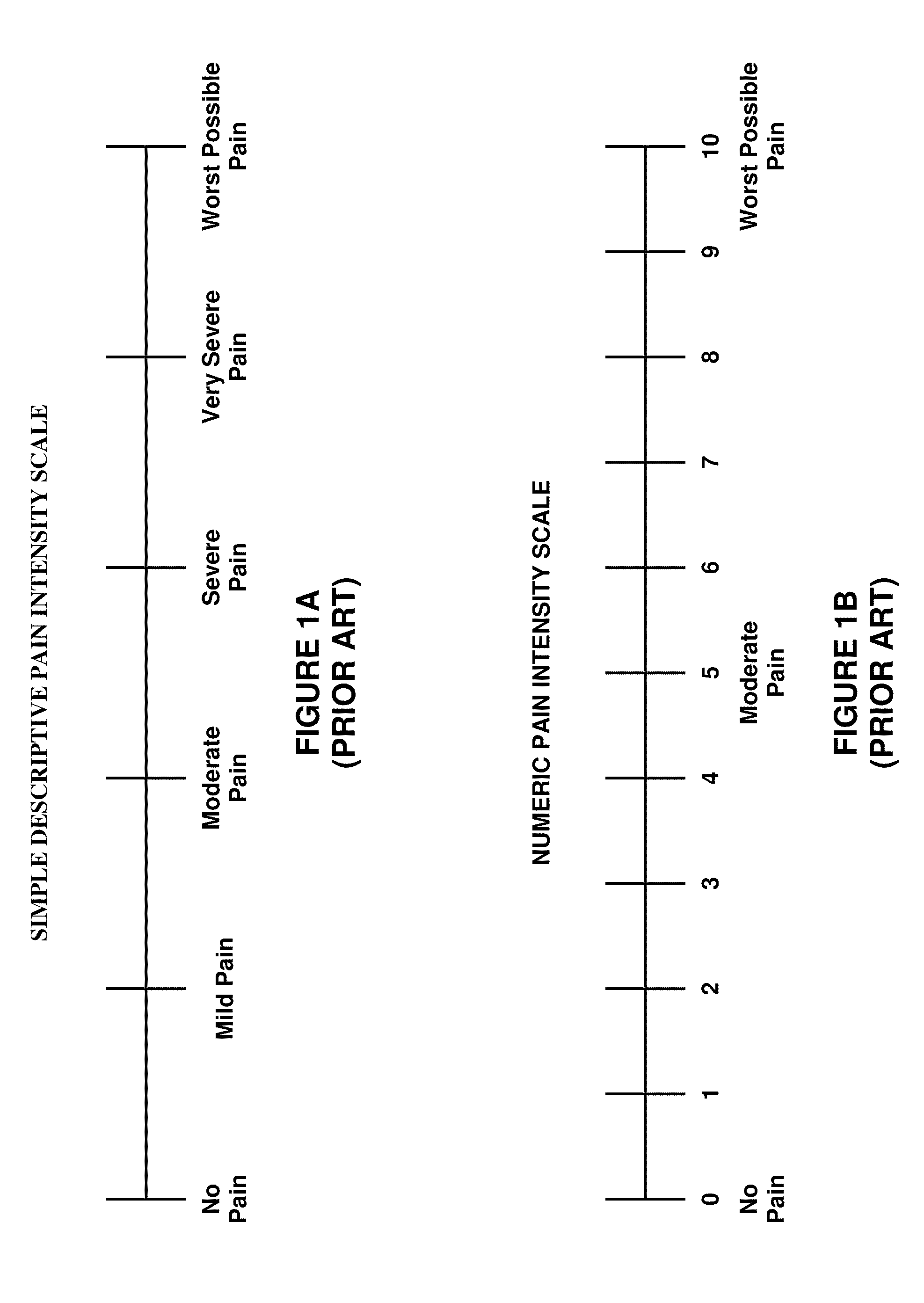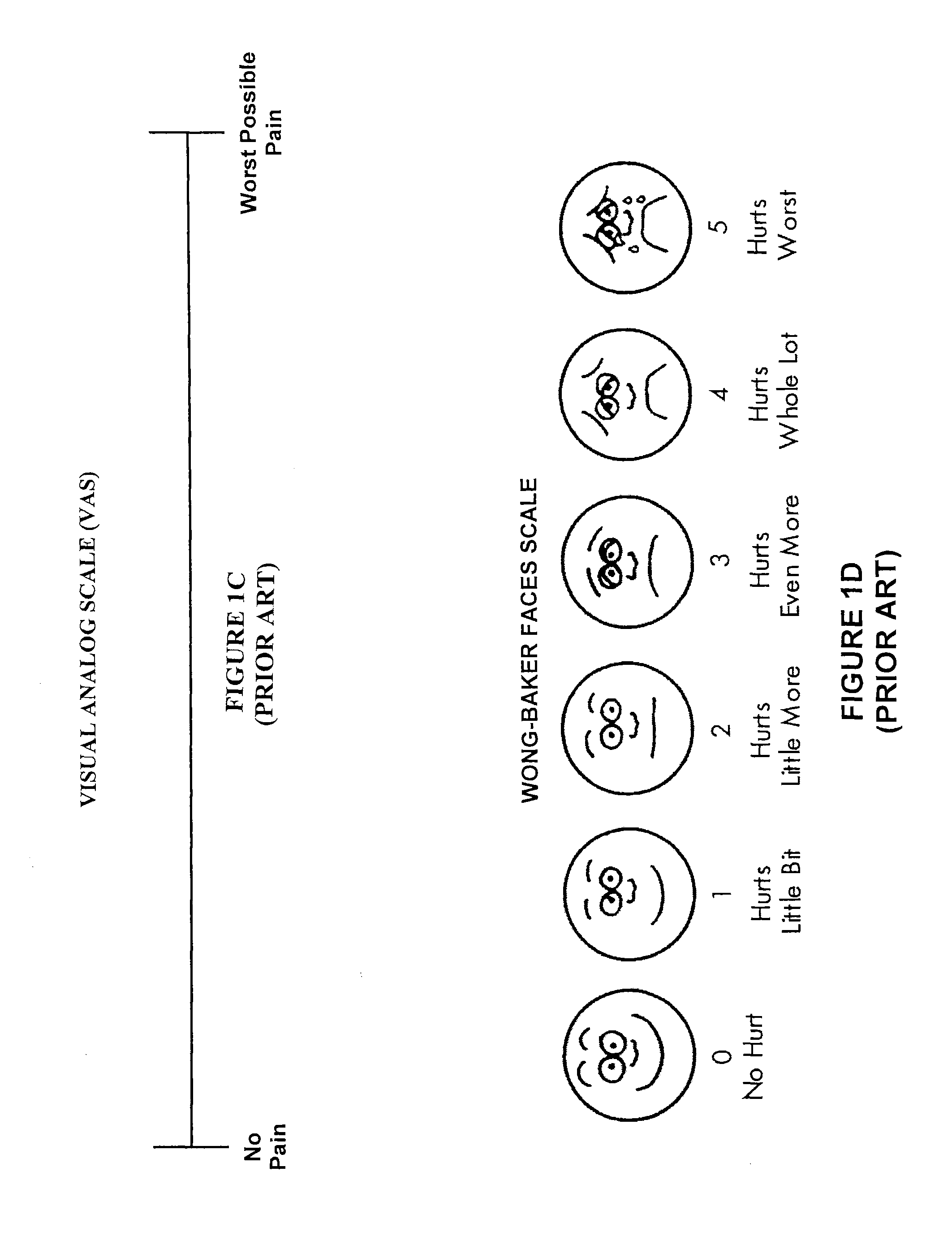Apparatus and method for human algometry
a technology of algometry and apparatus, applied in the field of human algometry apparatus and method, can solve the problems of ineffectiveness, ineffectiveness, insufficient treatment, and/or excessive treatment, and healthcare providers are often faced with the problem of diagnosing,
- Summary
- Abstract
- Description
- Claims
- Application Information
AI Technical Summary
Benefits of technology
Problems solved by technology
Method used
Image
Examples
Embodiment Construction
[0038]The present invention overcomes the shortcomings of the prior art and provides at least the advantages discussed below by integrating neuro-specific electrical stimulation with cortical activity monitoring to obtain an objective, qualitative, and quantitative measurement of pain, sensory detection thresholds (SDTs), the analgesic effects of drugs and other pain interventions, the pharmacodynamic impact of analgesics and other pain interventions, the efficacy and dose-response relationships of novel investigational drugs and other interventions targeted for the management of pain, and the onset of tolerance and / or analgesic-induced toxicity from different drugs and paint interventions. The present invention also provides for the objective characterization of different pain conditions (e.g., neuropathic pain, hyperalgesia, allodynia, etc.). In more detail, neuro-specific electrical stimulation is applied to a patient incrementally until it causes activation of specific sensory n...
PUM
 Login to View More
Login to View More Abstract
Description
Claims
Application Information
 Login to View More
Login to View More - R&D
- Intellectual Property
- Life Sciences
- Materials
- Tech Scout
- Unparalleled Data Quality
- Higher Quality Content
- 60% Fewer Hallucinations
Browse by: Latest US Patents, China's latest patents, Technical Efficacy Thesaurus, Application Domain, Technology Topic, Popular Technical Reports.
© 2025 PatSnap. All rights reserved.Legal|Privacy policy|Modern Slavery Act Transparency Statement|Sitemap|About US| Contact US: help@patsnap.com



